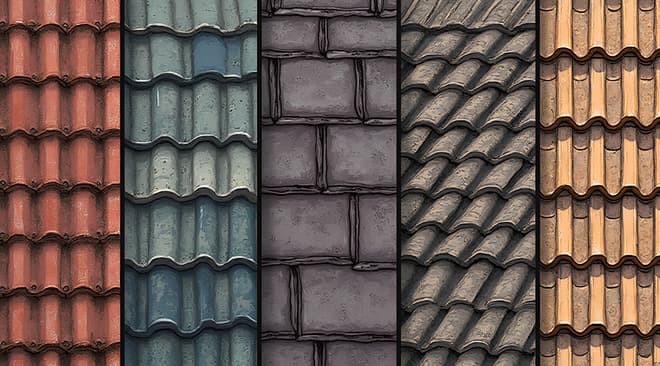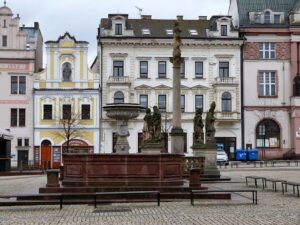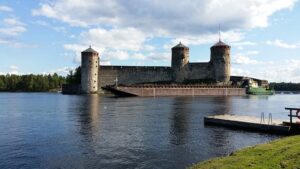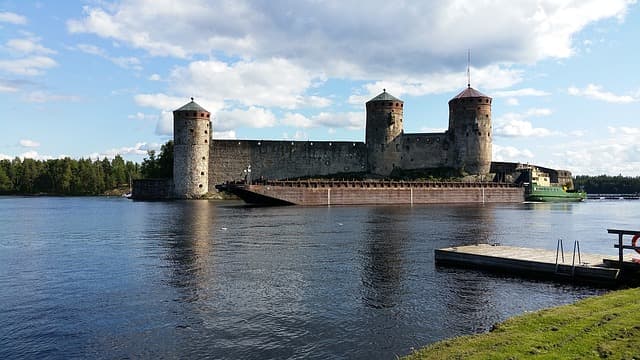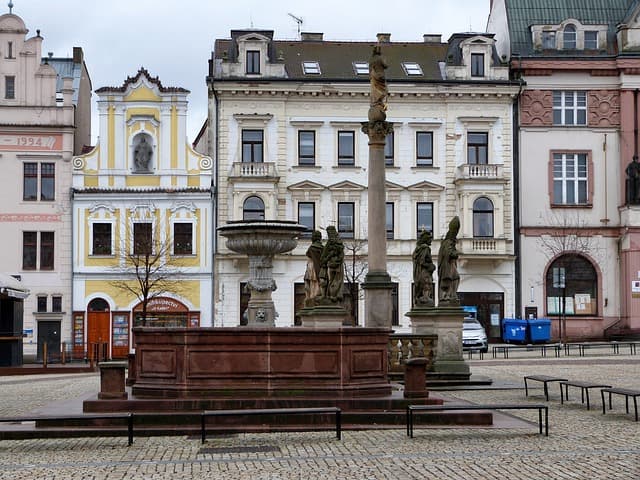There are plenty of places on the world map that look as if they came out of a photograph, and the small town of Gruyere (Switzerland) is undoubtedly one of them. The picturesque medieval town, nestled on the slopes of a hill at the foot of the Alps, is the birthplace of the famous Gruyere cheese. Every year thousands of tourists come here to walk through the old streets, climb to the top of the hill on the cable car and just feel the atmosphere of the Middle Ages.
Overview
Gruyere is a tiny town in the Republic of Switzerland, where everything is permeated with the spirit of the Middle Ages. It used to belong to the Counts of Gruyere. The family coat of arms depicts a crane, which has become an integral symbol of the city. The city was named after the bird, because Grue means “crane” in French.
The Gruyere Castle, which is another symbol of the city and Switzerland, was built in the 11th century in the southern part of the canton of Fribourg (the distance from Geneva 116 km, and 68 km from the capital – Bern). On an area of about 28.5 square kilometers live just over 2 thousand people.
The legend of the origin of the Gruyere town
The founder of the settlement is considered to be Gruerius – the Vandal chief. He was looking for fertile land where he could establish a town. As he walked up the banks of the Sarina River, he saw a beautiful place surrounded by mountains and generously sunlit. The land was uninhabited, however, Gruerius decided to lay the walls of the castle here.
According to legend, when construction was completed, a snow-white crane descended from the sky. The chief saw this as a good omen and from that day on the emblem of Gruyérius and the modern town of Gruyere was adorned by a crane.
The picturesque landscape of Gruyere in Switzerland is bewitching and inspiring. The mountain lake is considered one of the most beautiful in the country and on its shores the Fribourg cows graze, which give fragrant milk for the production of cheese and desserts.
In addition to the interesting sights that span eight centuries, the city has quite a busy life – guests are invited to restaurants that serve fondue, raclette and, of course, desserts with thick cream.
Gruyere is a gastronomic region of Switzerland, here you can see how the cheese is made. Those with a sweet tooth can enjoy a tour of the Cailler chocolate factory in nearby Broca.
What to do in the summer
The mountainous scenery attracts hikers, lovers of biking trails. There are many hiking trails, walking along which you can hear fascinating local legends. There is a trail on which there are preserved sculptures carved out of stone with a chainsaw.
In summer in Gruyere (Switzerland) tourists are offered a lot of active entertainment:
- bobsled rides;
- scooter rides;
- mini golf.
What to do in winter
Near the town of Gruyere is the largest ski area Moleson, the height of the slopes up to 2003 meters. There are 8 ski elevators and 35 km of ski runs of varying difficulty levels, including those for families. On the top of the mountain there is an observatory.
Vacationers go up the elevator to Charmey – a resort area, where in addition to skiing, you can enjoy a vacation in the hot thermal springs.
For your information. The oldest ski resort in Switzerland is St. Moritz.
Gruyere cheese and cheese museum
A visit to the attraction is a must on a trip to the town of Gruyere. The cheese factory is a few minutes from the train station.
You can observe the production during certain hours:
- 9-00 to 11-00;
- from 12-30 to 14-30.
Many tourists recommend planning a tour in the morning – until 9-00, to catch the process of cooking the product. The museum is equipped with interactive video stands, but the experience, of course, not as vivid as a visit to the factory.
In the first hall you can smell the aromas of mountain grass, which the cows feed on. Audio guide will tell you that the animal eats up to 100 kg of grass every day and gives up to 25 liters of milk.
There are four vats with a total capacity of 4,800 liters of milk in the showroom. One tank produces 12 heads of cheese, each weighing 35 kg. Before pouring the milk into the tank, experts always take a sample.
They mix the milk from the morning and evening milk yields, heat it, add yeast and a special enzyme to start the evaporation process, which lasts about 50 minutes. The formed clot is sliced with the help of knives, located in vats, and heated again at 60 degrees for 45 minutes.
The mass is then placed in special molds, using a blue hose for this purpose. A container is placed under the mold, where the whey drains and is fed to the piglets.
Perfect cleanliness is maintained on the premises, and each vat is washed thoroughly as soon as the cheese mass is removed. All heads of cheese are identified and stamped with the date of production and the number of the cheese dairy. They are then covered in molds and sent under the press for 15-16 hours. The weight of the press is 300 kg, but gradually it increases up to 900 kg. This is not the end of the process, after which the product is soaked in a salt solution for 20 hours.
The final stage is maturation in a special chamber, where a certain temperature regime is maintained. The characteristic crust appears after three months, after which the cheese is moved to a room where the temperature is kept no higher than 15 degrees. Here it is kept until sale.
Château Grüyer
Gruyere Castle in Switzerland is considered the second most visited in the country. The first is the Chillon Palace near Montreux. The castle in Gruyere is built on the slopes of a hill with a beautiful view of the Alps.
Over the years, Gruyere Castle was successively occupied by the Counts who built it, the bailiffs of Fribourg and then the Bovey and Balland families of Geneva, before it was bought by the Canton of Fribourg and opened to the public in 1938.
There are many legends associated with this place, but historians have not yet clarified the origins of the castle and the county. It is believed that the count’s family settled here in the 11th century, but paintings in one of the halls of the Gruyere Castle tell about the events of the year 400.
The Counts of Gruyere lived in the castle only until the 16th century, when the family became impoverished and the structure became the residence of officials. At that time, the exterior and interior decoration changed – elements characteristic of Baroque appeared. Elegant stone galleries with wide windows replaced part of the wooden galleries, a stair tower joined the main block, and a chapel was installed in the former defense tower.
In the 19th century, Gruyere Castle was almost ruined and was about to be demolished, but it was bought by a wealthy local resident – Mr. Bovey. The new owners carried out major repairs. The construction work was overseen by Daniel Bovey, who changed the organization and theme of every room in the building. He invited his artist friends from France and Geneva to the summer residence, and all took part in creating the new decorations. The grounds surrounding the castle were also restored.
At the beginning of the last century, the Château de Gruyere became once again the property of the Swiss canton and was transformed into a museum. Guests are offered the use of an audio guide. In addition, exhibitions of contemporary art are held in the castle.
At the end of the 20th century, numerous artists and illustrators exhibited their works in the castle. This gallery presents a selection of their works, most of which depict Gruyere and its château.
Various rooms have been preserved in the palace:
- The count’s hall;
- the kitchen;
- chapel;
- dormitory;
- music hall;
- hunting room;
- the room of the count’s mistress.
There is another legend connected with this room – the count fell in love with a simple girl and even put her in his castle. However, the legend is silent as to what count’s lawful spouse reacted to this fact.
Near the castle there is a French garden, but it is better to visit in summer. The castle leaves a pleasant, cozy feeling, and you want to return here again.

